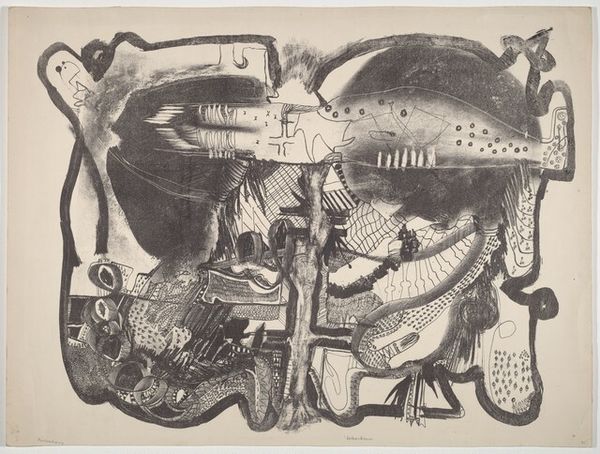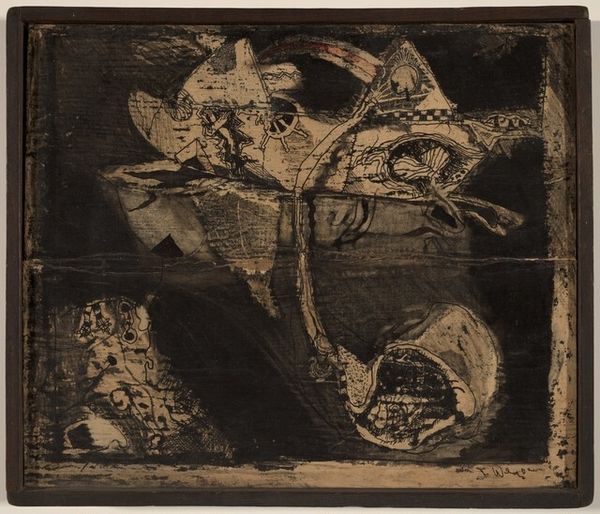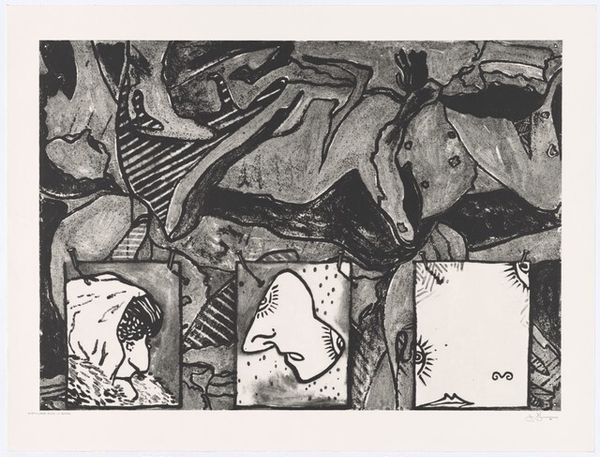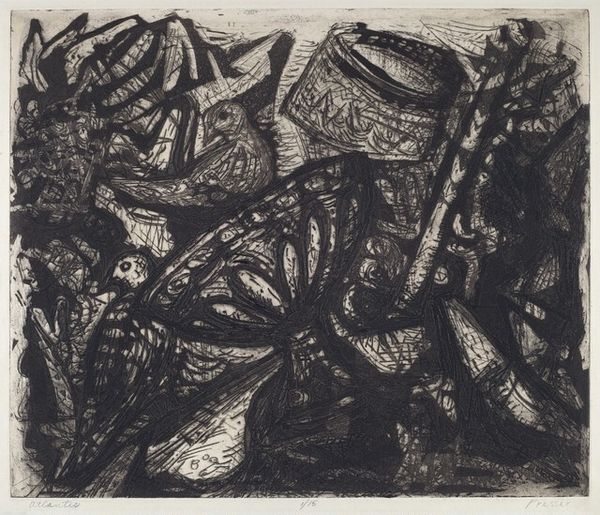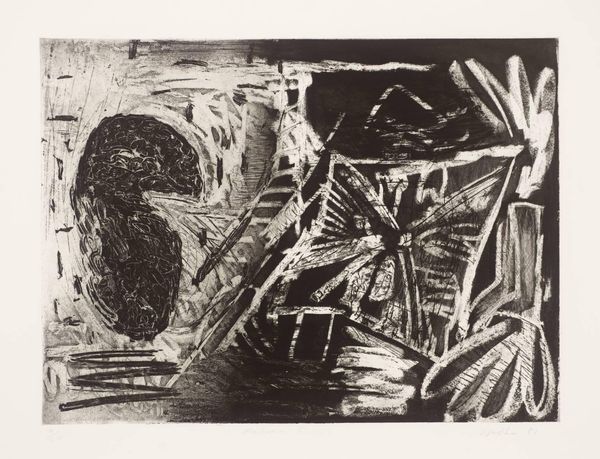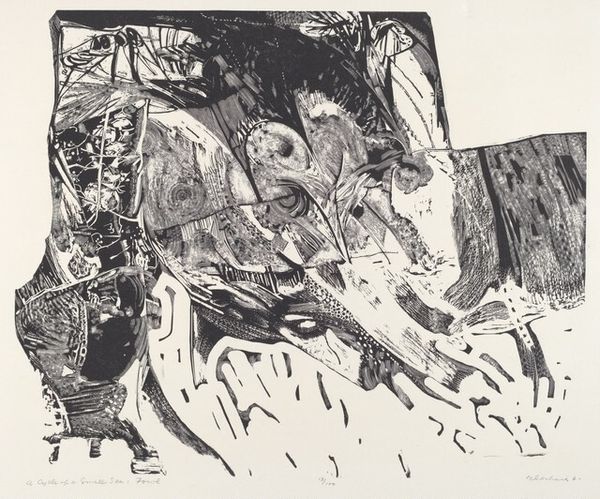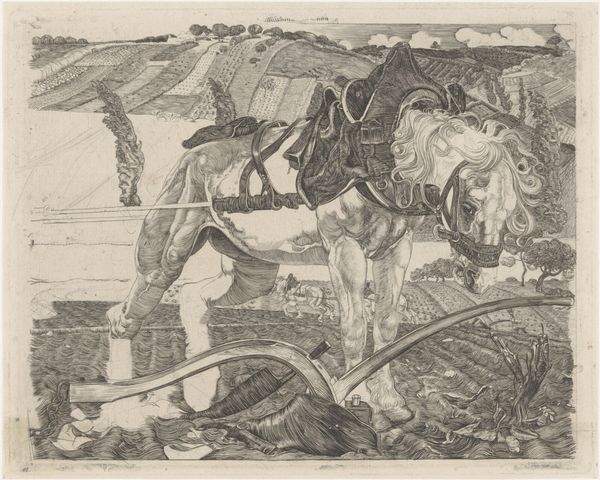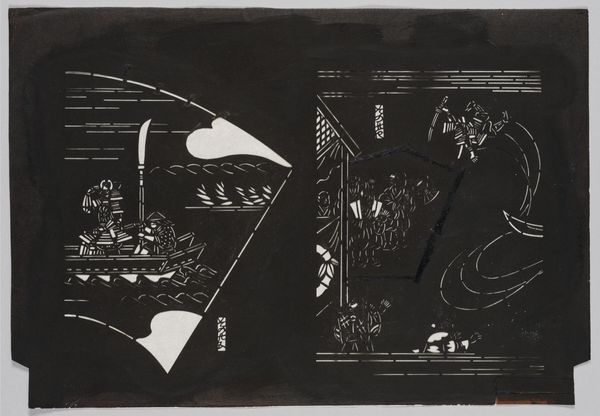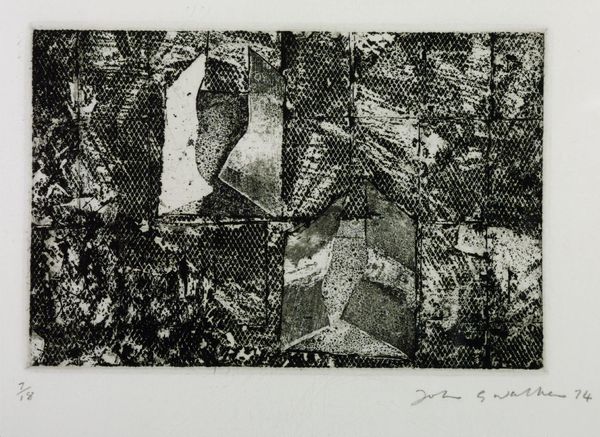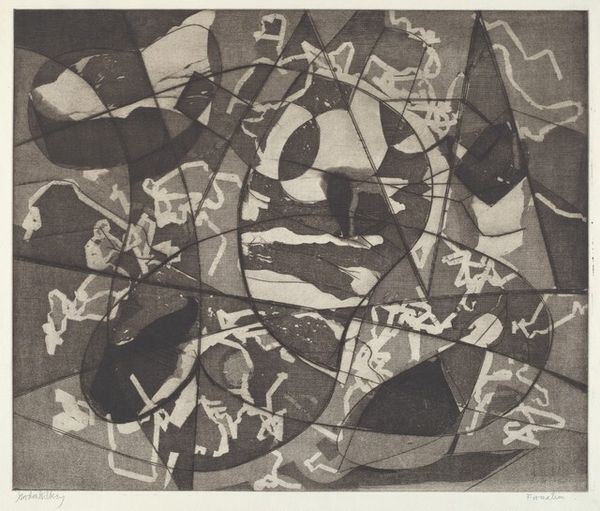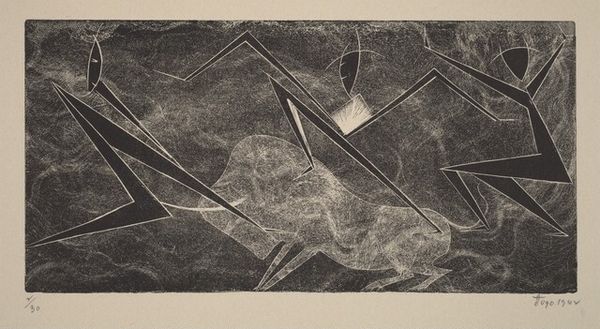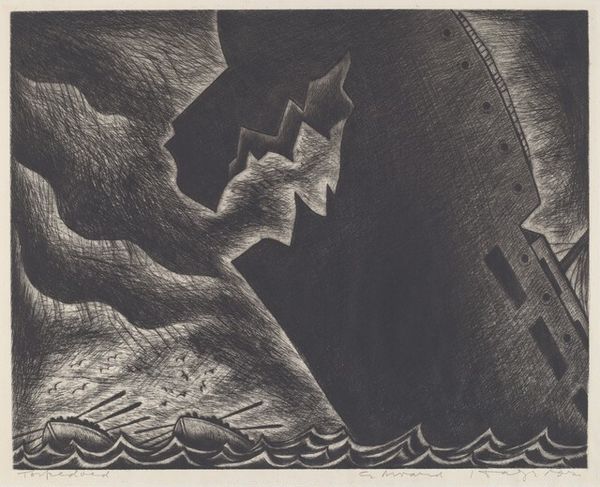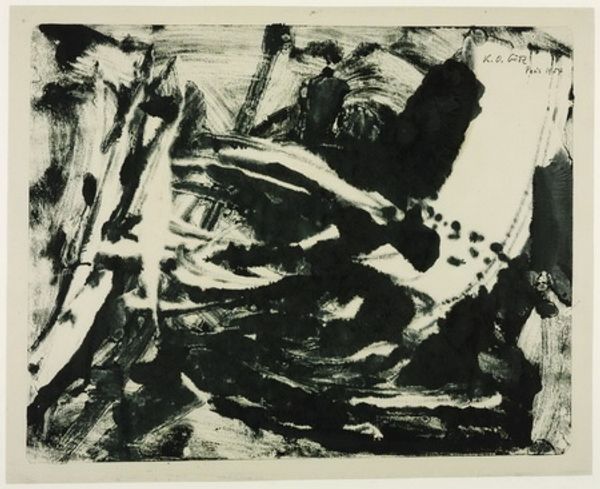
drawing, print, etching
#
drawing
# print
#
etching
#
figuration
#
abstraction
Copyright: Germaine Richier,Fair Use
Curator: Before us we have "Bat," a 1951 etching by Germaine Richier. Editor: Immediately striking—eerie, and undeniably grotesque in its raw depiction. The stark contrasts contribute to a certain emotional unrest. Curator: The formal tension certainly drives that response. Consider the spatial organization. The composition pivots around two figures – a large bat-like creature and a human-like, seemingly skeletal figure with outstretched wings, creating an asymmetrical yet balanced interplay of forms. The contrasting textures are palpable too. Editor: The symbolic weight of a bat in Western culture is unavoidable here; connected to the night, the unconscious, perhaps a primal fear. And it’s set against what looks like a lunar backdrop…there's a definite push-pull between the familiar and the deeply unsettling. What do you make of the skeletal figure, the almost crucified stance? Curator: That figure complicates any singular reading. Richier frequently incorporated fragmented bodies, expressing the anxieties of the post-war period, perhaps gesturing to an interest in the figure, yes, but only as a vessel. Notice how its geometric structuring challenges the classical body as ideal form. This pushes the whole visual construction toward emotional dissonance and cognitive friction. Editor: The lunar orb certainly reinforces the work’s resonance with cycles of transformation. In some traditions, bats can represent the soul’s journey; this lunar association could imply the transformation and renewal inherent in facing inner shadows. Do you think this connects with her biography? Curator: Possibly. Although I'd be reticent to draw overly biographical conclusions, that association cannot be disregarded outright. The artist uses visual elements to construct a formal syntax that communicates meaning above and beyond biographical events. It has internal logical structures. Editor: It is true that an overemphasis on biographical details does sometimes overshadow the actual artwork itself. It’s a very powerful image though – the psychological interplay it triggers keeps pulling you in different directions. Curator: Exactly, the power rests in the structural ambiguity, the deliberate tension in its forms. Editor: Well, after digging beneath its surface, the artwork revealed quite some complexities. Curator: Yes, and the beauty in complexity, is of course, something to always be appreciated.
Comments
No comments
Be the first to comment and join the conversation on the ultimate creative platform.

